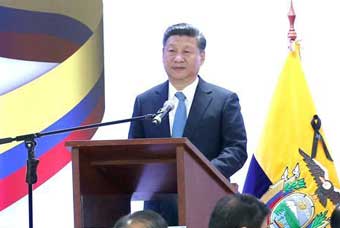SAN FRANCISCO, Jan. 8 (Xinhua) -- A new study calls for special business model for developing low-cost, off-grid solar energy in some remote areas where costs and remote terrain often make it impractical or even impossible to extend the electric grid.
Around the world, more than 1.2 billion people lack access to basic electricity service, and the majority of those people are living in developing nations, in rural or isolated areas with high rates of poverty.
When rural, isolated communities do gain access to solar power, the impact on residents can be profound, said Inara Scott, an assistant professor in the College of Business at Oregon State University (OSU) and the author of a study published in Renewable and Sustainable Energy Reviews. Children are more likely to go to and complete schooling, because they have light to study by. Kerosene lamps, which create indoor air pollution, are no longer needed, improving people's health. And work hours are increased, giving people more time to earn money or build home-based businesses.
The market for small solar lighting and charging units has grown dramatically in the last few years, and solar home systems offer cleaner, safer and cheaper lighting over time than kerosene. But even a small cost can be out of reach for people whose annual incomes are often less than 3,000 U.S. dollars per year, Scott said.
By examining successful business models for serving these populations, known as "base of the pyramid" markets, and successful renewable energy enterprises, looking for intersections that might aid businesses looking to market solar energy to base-of-pyramid markets, she found that a successful enterprise would include four primary components:
-- Community interaction: Work with local communities to understand local norms, culture, social issues and economic systems that might influence the effort;
-- Partnerships: Join forces with other companies, government organizations, non-profit groups or non-governmental organizations to share ideas and resources and gain support;
-- Local capacity building: People in the community may lack product knowledge and have little experience with technology, while the community may not have typical distribution channels. Consider the potential customers as both producers and consumers, training local entrepreneurs as distributors, marketers and equipment installation/repair technicians;
-- Barriers unique to the off-grid market: Address issues such as financing of upfront costs, which may be prohibitive to consumers; educate people on the products and their benefits; build trust in quality and reliability; and develop multiple strong distribution networks.
"Surviving and growing in this market is very different than in a typical commercial enterprise," she was quoted as saying in a news release from OSU. "You're not going to be successful just trying to sell a product. This is really a social enterprise, with the goal of trying to bring people out of poverty while also emphasizing sustainable development."














